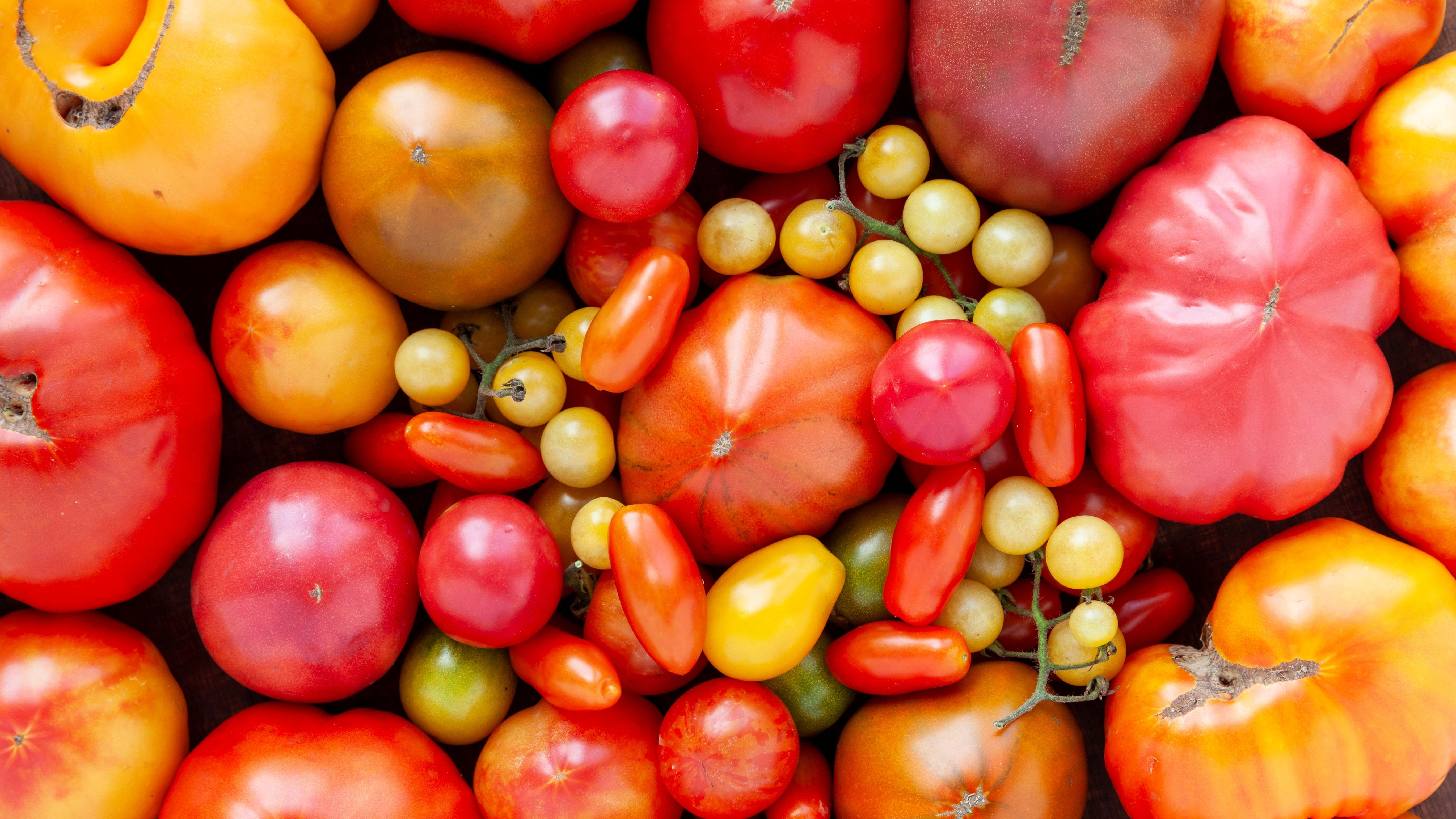The Cardinal Rule For Choosing Flavorful Tomatoes
A tomato expert shares the best varieties for every meal and which ones to avoid.
When you're buying groceries, you've probably noticed that you have your pick of seemingly countless varieties of tomato, any of which you can bring home for a multitude of delicious applications. But if you want to know which tomatoes will make your salads sing and your sauces pop with flavor, it's best to turn to the experts.
Thankfully, there's someone in The Takeout's own backyard with so many years of tomato knowledge he's got wisdom to spare. Bob Zeni, aka the Chicago Tomato Man and certified master gardener, has been growing tomatoes for around 40 years, and he is anything but shy when it comes to expressing his feelings about tomatoes.
Store-bought vs. home-grown tomatoes
Before our tomato lessons begin, I have to make one thing very clear: Chicago's Tomato Man does not want you to buy your tomatoes at the grocery store. Zeni affectionately refers to these tomatoes as "genetically modified, lab-spawned water balloons." Doubling down on that description, he explains that supermarket varieties "have the same relationship to the flavor of real tomatoes as sawdust does to foie gras."
Zeni suggests going to a farmers market or growing tomatoes yourself. Once you've experienced tomatoes outside your local grocery chain, he guarantees you'll never want to go back.
What does “heirloom” mean for tomatoes?
Farmer's Almanac defines heirloom tomatoes as being open pollinated (pollinated via insects or wind, not humans) and coming from a regional variety of seed that has spanned multiple generations within that area. These types of tomatoes have been selected by growers because they have some specific desirable trait; they can come from seeds more than 40-50 years old.
Zeni, however, says the term "heirloom" excludes open-pollinated and delicious varieties that have been discovered more recently (i.e. within the last 40 years). For this reason, he applies the descriptor "heirloom" to any variety that "is not genetically modified but is open-pollinated."
Common tomatoes and the differences between them
There are endless varieties of tomatoes and so many ways to use them in a dish; it's no wonder that Zeni and others like him are so passionate about the plant. But that abundance means it can be hard to know which type of tomato will work best on a particular plate. Here's a quick rundown of some of the more common varieties and where they fit best on your menu.
- The Beefsteak: Also known as a slicer, these are the tomatoes you want on your burgers and in your BLT sandwiches. Zeni says the ideal beefsteak is one that still holds its integrity after being sliced, instead of squishing and falling apart. This type of tomato is thick with a double "c" and ranges anywhere from the size of a baseball to (more rarely) a 16-inch softball. They're also meatier and should have fewer cavities inside. If you grab one that looks more orange or yellow in color then you're in for a lighter, sweeter flavor with less acidity than other varieties.
- The Roma: Smaller than a meaty beefsteak, Roma tomatoes are best suited for sauces and canning. Zeni says the best Romas have very few seeds and skin that comes off relatively easily—which makes sense for its purposes, because you wouldn't want too many seeds in your sauce.
- Cherry tomatoes: Masterclass describes cherry tomatoes as being plump, juicy, and sweet in taste. Fitting their namesake, they are usually small and round in shape. This type of tomato is best used in salads and salsas, and a handful can even be enjoyed on its own as a snack. Zeni adds that certain varieties of cherry tomatoes can be extremely sweet, such as a black cherry tomato (a bestseller of Zeni's), which actually is closer to black in color. Although we might think of tomatoes primarily as red, orange, and yellow, green and even blackish-purple varieties aren't uncommon.
- Grape tomatoes: Grape tomatoes are one of the smallest varieties, smaller than cherry, with a more oblong shape (resembling a grape). Grape tomatoes are also a little less sweet than a cherry tomato and have a thicker skin. Chef Rich LaMarita of the Natural Gourmet Institute tells Southern Living that grape tomatoes are best used in salads, kebabs, and quick sauces, and are good for roasting.
Grocery store tomatoes are an insult to the name, says Zeni. "Tasteless travesties," he calls them, encouraging everyone to buy their tomatoes somewhere else if they can. Aside from that, though, there are so many different tomatoes to choose from, and each lends itself well to being sliced, diced, canned, sauced, or snacked upon. You deserve better than bland.
